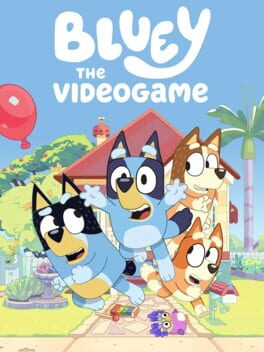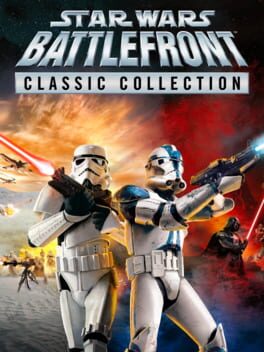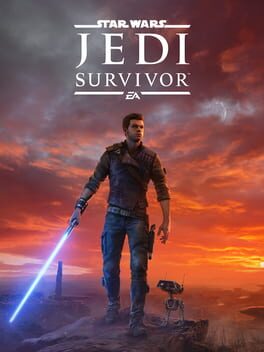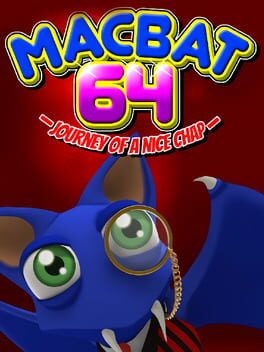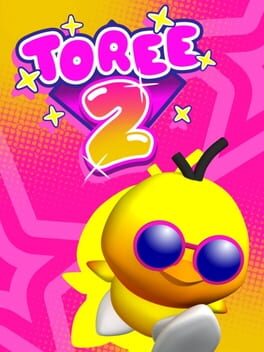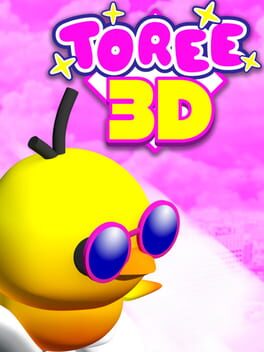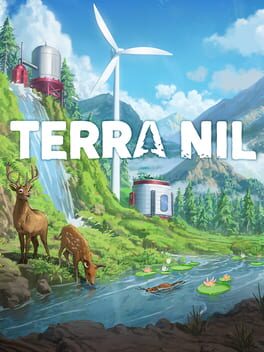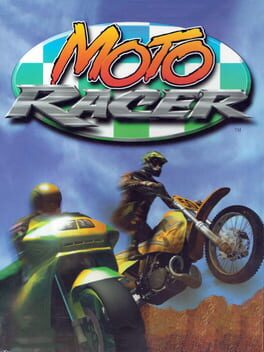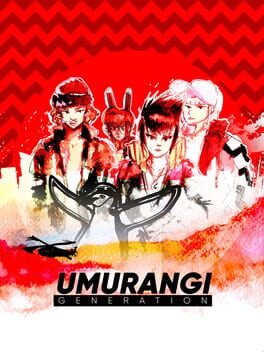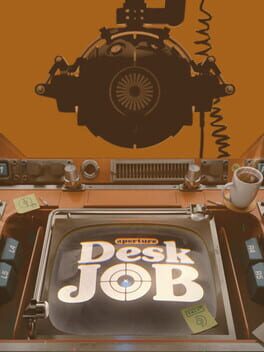Krombopulos_MK
2023
Listen, if your kid doesn’t know about this game, leave them in their blissful ignorance. If they insist on trying it, they will probably have some fun. But also be really confused as to why they cannot do what is asked of them all of a sudden (it’s weird, or glitched, or the platforming is total ass so they can’t lock in how it works).
So they’ll enjoy it, but also become sad because all of a sudden the game seems to hate them. And as the adult joining the play through, you’ll be consistently disappointed at how low quality and effort the whole thing is.
So they’ll enjoy it, but also become sad because all of a sudden the game seems to hate them. And as the adult joining the play through, you’ll be consistently disappointed at how low quality and effort the whole thing is.
Refunded it when I saw the negative impressions.
Bought it again to see for myself.
Immediately refunded again.
Man, what the hell. Xbox quick match multiplayer seems to keep routing me private matches that require a passcode. When I started my own match I found that the aiming is totally borked with a weird acceleration not present in the old version. And no one joined. Just a bummer.
Bought it again to see for myself.
Immediately refunded again.
Man, what the hell. Xbox quick match multiplayer seems to keep routing me private matches that require a passcode. When I started my own match I found that the aiming is totally borked with a weird acceleration not present in the old version. And no one joined. Just a bummer.
2019
2020
Jedi: Survivor not only improves on practically everything its predecessor did, but charts a bold, alternative course for what the 3rd-Person-AAA-Action-Adventure genre can be. Mostly by committing to making everything you do fun yet, at the same time, showing that doing so doesn't undermine the ability to be invested in a story or take characters seriously. One moment I'm platforming like Ratchet & Clank, the next I'm at the edge of my seat as characters have a moment.
It forsakes being the prettiest game, having the most elaborate simulations or animations, or having the most ambitious story in the world, for the fun that can be had if you don't take everything so seriously and have a connective tissue of heartfelt story along the way.
What is interesting is that this leads to some of the best setpieces I have seen in a long time. And moment-to-moment gameplay that is a delight. All wrapped in a story that has me absolutely pining for the next game.
Of course, Jedi: Survivor isn't perfect, there are graphical glitches that are distracting, even on Series X, and it feels like you hop back to a planet one too many times making the mid-game drag ever so slightly. But that is all easily overlooked. If you have any affinity for Star Wars, or just like the prospect of a fun game, Jedi: Survivor has you covered.
Spoilers Spoilers Spoilers Spoilers Spoilers Spoilers Spoilers
Spoilers Spoilers Spoilers Spoilers Spoilers Spoilers SpoilersSpoilers Spoilers Spoilers Spoilers Spoilers Spoilers SpoilersSpoilers Spoilers Spoilers Spoilers Spoilers Spoilers SpoilersSpoilers Spoilers Spoilers Spoilers Spoilers Spoilers SpoilersSpoilers Spoilers Spoilers Spoilers Spoilers Spoilers
One last note, I was super impressed with was how the game took Cal, the generic protagonist, and broke him. So that by the end, he was a real character I was invested in.
Which made the prompt "to embrace the darkness" incredible. I legitimately didn't want him to, but the game didn't just force your hand, but showed you there was no alternative. But then left you with that power for the rest of the game, always tempting you. Even when you didn't need it, you had a "win quick with the darkness" button waiting in the wings. I rarely used it, but there were moments of desperation when I popped it to survive. Just like Cal would. And then I felt bad for doing so, like Cal would.
Many video games try to give you dark powers or let you slide towards darker means, but hamfistedly guilt you for it. Like, "we rewarded you with cool new things you can do! But you are a bad person for using them!" And it sucks because you either have to commit to not fully playing the game or ignore its weird judgement that it hasn't earned.
But somehow Jedi: Surivor nails it. The loop of knowing you have a final resort, resisting the final resort, in desperation using the final resort, and then regretting it is powerful. And then the game sends you to orphan a child.
The last fourth of the game instills a surprising amount of dread because of all the no win situations Cal is put into. He's not necessarily the villian, but he can't keep his hands clean or some code up either. What will it actually take for him to survive? Can he protect his family without falling like the antagonists of this game did? I can't wait to find out.
It forsakes being the prettiest game, having the most elaborate simulations or animations, or having the most ambitious story in the world, for the fun that can be had if you don't take everything so seriously and have a connective tissue of heartfelt story along the way.
What is interesting is that this leads to some of the best setpieces I have seen in a long time. And moment-to-moment gameplay that is a delight. All wrapped in a story that has me absolutely pining for the next game.
Of course, Jedi: Survivor isn't perfect, there are graphical glitches that are distracting, even on Series X, and it feels like you hop back to a planet one too many times making the mid-game drag ever so slightly. But that is all easily overlooked. If you have any affinity for Star Wars, or just like the prospect of a fun game, Jedi: Survivor has you covered.
Spoilers Spoilers Spoilers Spoilers Spoilers Spoilers Spoilers
Spoilers Spoilers Spoilers Spoilers Spoilers Spoilers SpoilersSpoilers Spoilers Spoilers Spoilers Spoilers Spoilers SpoilersSpoilers Spoilers Spoilers Spoilers Spoilers Spoilers SpoilersSpoilers Spoilers Spoilers Spoilers Spoilers Spoilers SpoilersSpoilers Spoilers Spoilers Spoilers Spoilers Spoilers
One last note, I was super impressed with was how the game took Cal, the generic protagonist, and broke him. So that by the end, he was a real character I was invested in.
Which made the prompt "to embrace the darkness" incredible. I legitimately didn't want him to, but the game didn't just force your hand, but showed you there was no alternative. But then left you with that power for the rest of the game, always tempting you. Even when you didn't need it, you had a "win quick with the darkness" button waiting in the wings. I rarely used it, but there were moments of desperation when I popped it to survive. Just like Cal would. And then I felt bad for doing so, like Cal would.
Many video games try to give you dark powers or let you slide towards darker means, but hamfistedly guilt you for it. Like, "we rewarded you with cool new things you can do! But you are a bad person for using them!" And it sucks because you either have to commit to not fully playing the game or ignore its weird judgement that it hasn't earned.
But somehow Jedi: Surivor nails it. The loop of knowing you have a final resort, resisting the final resort, in desperation using the final resort, and then regretting it is powerful. And then the game sends you to orphan a child.
The last fourth of the game instills a surprising amount of dread because of all the no win situations Cal is put into. He's not necessarily the villian, but he can't keep his hands clean or some code up either. What will it actually take for him to survive? Can he protect his family without falling like the antagonists of this game did? I can't wait to find out.
Macbat is a delightful, if light, tour through the 64 era. While Super Kiwi 64 is a narrower but more realized slice of one 64 game (and probably the better game for it), Macbat dashes through the highlights of the platform. It is the definition of a nostalgia trip. But this an era I have a ton of nostalgia for, so I enjoyed it.
2021
2021
2023
2023
1997
I remember playing this as a demo disc that came with an old Compaq tower and loving it. Imagine my surprise to find out that not only does it have several more maps, but also holds up as a slim, but pretty delightful arcade racer.
I don’t know if it is my nostalgia, but Moto just has a vibe. From the tracks to the music to the way the engines rev, it has a pretty distinct identity. And a fun one at that, spanning both the street and dirt races.
One of the dirt races is across the top of the Great Wall of China. Enough said.
I don’t know if it is my nostalgia, but Moto just has a vibe. From the tracks to the music to the way the engines rev, it has a pretty distinct identity. And a fun one at that, spanning both the street and dirt races.
One of the dirt races is across the top of the Great Wall of China. Enough said.
2021
The Horizon series is comfort food. They are the omelette of video games, never the best meal that you have ever had, but consistently good, sometimes even great, and endlessly customizable to suit your taste. Hate onions? Leave them off! Don’t like drift challenges? You never have to touch them! Here’s a bottle of Sriracha and a difficulty slider so you can incrementally decide the challenge for tonight. No matter your preferences, there is probably a configuration you can find to like.
Horizon 5 follows in this tried and true and growing tired formula with noticeable, but modest, improvements. Visuals have taken a leap. Mexico is more interesting than Great Britain. And everything that has been fun in the past is just as (if not more) fun now.
But 5 hasn’t perfected the formula. Choosing between quality and performance modes feels like a legitimate lose/lose. There is still no meaningful progression path in the game. And the tone of the writing still makes Steve Buscemi dressed as a 14 year old seem positively on the pulse of culture.
However, perhaps the hardest part of the game to critique is the nagging feeling that it is just more of the same. Because while that might be somewhat true, no one else seems to have a better idea. Since the first Horizon game in 2012, no one has come close to Playground’s crown and hold over the open world/sandbox racing game.
Because the omelette is still really good! Driving fast, flying off a mountain, and juicing cars is good, dumb fun. It’s just that maybe the kitchen should try their hand at Eggs Benedict next time. But until then come on over, take a load off, and enjoy some comfort food.
Horizon 5 follows in this tried and true and growing tired formula with noticeable, but modest, improvements. Visuals have taken a leap. Mexico is more interesting than Great Britain. And everything that has been fun in the past is just as (if not more) fun now.
But 5 hasn’t perfected the formula. Choosing between quality and performance modes feels like a legitimate lose/lose. There is still no meaningful progression path in the game. And the tone of the writing still makes Steve Buscemi dressed as a 14 year old seem positively on the pulse of culture.
However, perhaps the hardest part of the game to critique is the nagging feeling that it is just more of the same. Because while that might be somewhat true, no one else seems to have a better idea. Since the first Horizon game in 2012, no one has come close to Playground’s crown and hold over the open world/sandbox racing game.
Because the omelette is still really good! Driving fast, flying off a mountain, and juicing cars is good, dumb fun. It’s just that maybe the kitchen should try their hand at Eggs Benedict next time. But until then come on over, take a load off, and enjoy some comfort food.
I wasn’t sold on Umurangi Generation until the very end when the full arc of its narrative and themes came into view. Up until that point, the game’s interesting world and unique way of exploring it (primarily through photography) had been somewhat hamstrung by clunky controls, counterproductive objectives, and a practically unparsable scoring system for the pictures you take.
But by the last run of stages (which were originally and surprisingly DLC), the game itself provided ways or I had found ways to work around these short comings. All the while, the scenes you walk in on escalate to an unforgettable ending.
So Umurangi Generation is far from perfect, but it drags itself far closer by the end. It definitely is a game in which player’s mileage will vary, in this case depending upon if you love to take pictures or not. But, regardless of your interest in photography, this game goes places you will want to see.
But by the last run of stages (which were originally and surprisingly DLC), the game itself provided ways or I had found ways to work around these short comings. All the while, the scenes you walk in on escalate to an unforgettable ending.
So Umurangi Generation is far from perfect, but it drags itself far closer by the end. It definitely is a game in which player’s mileage will vary, in this case depending upon if you love to take pictures or not. But, regardless of your interest in photography, this game goes places you will want to see.
2022
It is amazing, in retrospect, that Prime managed to so fully translate Metroid into a first person platformer/adventure game over two decades ago. And now, with a fresh coat of paint and non-antiquated controls, it could pass as truly modern release.
Because a tremendous amount of the experience not only holds up, but also stands as a unique experience. Few games strike the balance of letting the player wonder like Prime does. There is always the tension that you could be totally lost, but there is such satisfaction from when a hunch proves right.
Beyond that feeling of wondering though, Prime excels in the difficult tasks of making enjoyable first person platforming and a steady stream of Puzzles that aren’t perfunctory but kind of the point. All wrapped in impeccable aesthetics from art direction to music.
Overarching, though, my one major criticism is that the game could have been tuned to make back tracking mildly less punishing. Not with fast travel or something against the spirit of wondering, but in giving the player more powerful tools to remove some friction in traversing earlier parts of the map. Prime somewhat does this, but something that speeds up movement by the end and weapon tuning for a late game area so it isn’t such a pain to go back through would be huge improvements.
But regardless, Prime’s final stretch of exploration and bosses are terrific and bring the game together as perhaps the best Metroid, despite the mid game friction. It still holds up today and makes me excited to see what the upcoming sequel will be like. I hope they have the confidence to keep this game’s DNA intact while perhaps pulling a few lessons in mechanics progression from modern Metroidvanas.
Because a tremendous amount of the experience not only holds up, but also stands as a unique experience. Few games strike the balance of letting the player wonder like Prime does. There is always the tension that you could be totally lost, but there is such satisfaction from when a hunch proves right.
Beyond that feeling of wondering though, Prime excels in the difficult tasks of making enjoyable first person platforming and a steady stream of Puzzles that aren’t perfunctory but kind of the point. All wrapped in impeccable aesthetics from art direction to music.
Overarching, though, my one major criticism is that the game could have been tuned to make back tracking mildly less punishing. Not with fast travel or something against the spirit of wondering, but in giving the player more powerful tools to remove some friction in traversing earlier parts of the map. Prime somewhat does this, but something that speeds up movement by the end and weapon tuning for a late game area so it isn’t such a pain to go back through would be huge improvements.
But regardless, Prime’s final stretch of exploration and bosses are terrific and bring the game together as perhaps the best Metroid, despite the mid game friction. It still holds up today and makes me excited to see what the upcoming sequel will be like. I hope they have the confidence to keep this game’s DNA intact while perhaps pulling a few lessons in mechanics progression from modern Metroidvanas.
